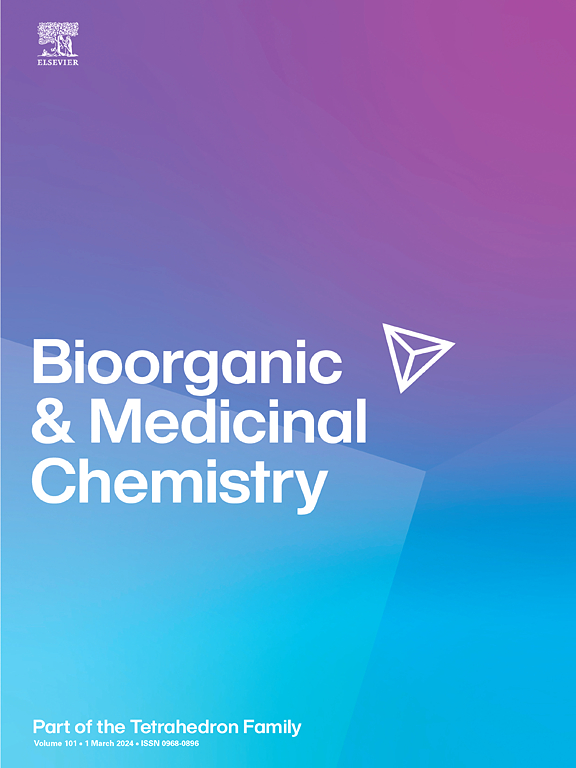Discovery, synthesis and SAR of 3-aryl pyrazolidines, novel dual orexin receptor antagonists for the treatment of sleep disorders
IF 3
3区 医学
Q2 BIOCHEMISTRY & MOLECULAR BIOLOGY
引用次数: 0
Abstract
We report a facet of the drug discovery program aimed at identifying dual orexin receptor antagonists (DORAs) suitable for treating sleep disorders requiring a fast onset of action (<30 min) and a short duration of the hypnotic effect (2–4 h). Starting from the previously disclosed orexin antagonist (+)-6, we designed a novel and potent DORA, the 3-aryl pyrazolidine (+)-7. With the objective of identifying 3-aryl pyrazolidine DORAs that could back-up our preclinical candidate IDOR-1117-1680 DORA 5, we established structure-activity relationships (SAR) of the three motives substituting the pyrazolidine core of (+)-7. These investigations afforded DORA (+)-27, whose dog pharmacokinetic (PK) parameters were not supportive of further in vivo studies. Additional investigations afforded DORA (+)-33, a 3-aryl pyrazolidine demonstrating improved dog PK parameters and achieving in silico fast and short-action pharmacological requirements. DORA (+)-33 demonstrated in vivo efficacy in a rat sleep model but it time-dependently inhibited CYP3A4 so its advancement to further in vivo studies was halted.

用于治疗睡眠障碍的新型双食欲素受体拮抗剂3-芳基吡唑烷的发现、合成和SAR
我们报告了药物发现计划的一个方面,旨在确定双食欲素受体拮抗剂(DORAs),适用于治疗需要快速起效(30分钟)和短时间催眠效果(2-4小时)的睡眠障碍。从先前公开的食欲素拮抗剂(+)-6开始,我们设计了一种新的有效的DORA, 3-芳基吡唑烷(+)-7。为了鉴定能够支持临床前候选IDOR-1117-1680 DORA 5的3-芳基吡唑烷DORA,我们建立了取代(+)-7吡唑烷核心的三种动机的构效关系(SAR)。这些研究提供了DORA(+)-27,其狗药代动力学(PK)参数不支持进一步的体内研究。进一步的研究表明,DORA(+)-33是一种3-芳基吡唑烷,可以改善狗的PK参数,并在计算机上实现快速和短效的药理要求。DORA(+)-33在大鼠睡眠模型中显示出体内有效性,但它具有时间依赖性,可以抑制CYP3A4,因此其进一步的体内研究被停止。
本文章由计算机程序翻译,如有差异,请以英文原文为准。
求助全文
约1分钟内获得全文
求助全文
来源期刊

Bioorganic & Medicinal Chemistry
医学-生化与分子生物学
CiteScore
6.80
自引率
2.90%
发文量
413
审稿时长
17 days
期刊介绍:
Bioorganic & Medicinal Chemistry provides an international forum for the publication of full original research papers and critical reviews on molecular interactions in key biological targets such as receptors, channels, enzymes, nucleotides, lipids and saccharides.
The aim of the journal is to promote a better understanding at the molecular level of life processes, and living organisms, as well as the interaction of these with chemical agents. A special feature will be that colour illustrations will be reproduced at no charge to the author, provided that the Editor agrees that colour is essential to the information content of the illustration in question.
 求助内容:
求助内容: 应助结果提醒方式:
应助结果提醒方式:


